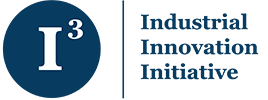The Industrial Innovation Initiative’s October 2025 plenary featured leaders from the iron and steel sector, who shared valuable insights on progress, challenges, and opportunities. Steel is essential to United States (US) national economic security. It is the backbone of critical infrastructure, supporting nearly two million American jobs directly and indirectly. As the most easily recycled material, steel is central to a circular economy. Its durability, flexibility, and reusability make it a vital component of modern life. Iron and steel are used in vehicles, bridges, buildings, appliances, batteries, and more.
Here are a few high-level takeaways from the conversation:
US vs. Global Greenhouse Gas (GHG) Production: The US is a global leader in efficient steel production. The global steel industry accounts for approximately eight percent of total global greenhouse gas emissions, while the US steel sector accounts for roughly one percent of total US emissions. The American steel industry is the cleanest and most energy-efficient among the world’s leading steel industries, producing steel with lower carbon dioxide emissions intensity than the other major steel-producing countries. One reason for this is that over 70 percent of US steel is produced via electric arc furnaces (EAFs), which typically have lower direct emissions than blast furnace-basic oxygen furnaces (BF-BOF), which produce the remainder of US steel.
Excess Capacity: Global overcapacity is a persistent and growing challenge for the American steel industry. Due to foreign government subsidies and other trade-distorting policies, the OECD estimates global overcapacity in the steel industry to be 602 million metric tons in 2024 and is forecast to grow to 721 million metric tons by 2027. From 2000 to 2024, annual Chinese raw steel production increased by approximately 880 million metric tons, a volume over 10 times greater than the total crude steel production in the US in 2024. When global production capacity exceeds demand, it puts downward pressure on the competitiveness of domestic industries. Much of the excess supply is produced in countries where steel is produced with lower production costs and carbon efficiency standards than comparable products made in the US. A significant share of this underpriced steel flows to regions with high demand, often the US, as it is one of the world’s strongest markets for steel products. Without effective policy and trade measures, overcapacity will continue to be a hurdle for US producers and a barrier to reducing global GHG emissions.
Trade Exposure: The steel sector is highly trade-exposed. US producers operate on thin margins while facing growing expectations to reduce emissions. Few downstream customers are currently willing to pay a premium to support the transition to more innovative production. Policies, particularly those related to trade, need to be better aligned to encourage, rather than discourage, first-movers across the value chain.
Technology Innovation: Opportunities to increase carbon efficiency include improving energy and material efficiency, reusing coproducts (such as substituting clinker in cement with steel slag), and utilizing off gases to generate steam, heat, power, or other products (e.g., carbon utilization). Artificial intelligence may also expand opportunities for efficiency. Several key technologies show strong potential in the sector, including hydrogen-based direct reduced iron, electrification with clean power, and carbon capture, utilization, and storage. Many large producers have established innovative funds to support startups and breakthrough technologies that will accelerate the transition, but emerging technological solutions still face high capital costs or social and operational barriers. Startups play a crucial role in addressing these challenges by developing innovative solutions, including processes that require less energy, can be powered by renewable energy, and enable equipment to start and stop without significant temperature fluctuations. Demonstration projects and partnerships across the value chain are key to scaling up innovations.
Market Innovation: Several public and private financing mechanisms support the commercialization of innovative technologies. Public tools such as state grants, loans, and tax credits are powerful accelerators for industrial innovation. Colorado’s Industrial Tax Credit Offering (CITCO), a $168 million loan program offering up to $8 million per eligible project, was highlighted for its ease of use and the flexibility it offered through an “Other” category. On the private side, environmental attribute certificates (EACs) are an emerging mechanism that separates the environmental benefit from the physical product. This flexibility enables third-party partners to claim the EAC toward their sustainability goals rather than purchase the product itself, while still creating reliable demand.
Thanks to our I3 members and external speakers for sharing these valuable insights.
Check out some of the resources below:
- Steel Climate Impact 2025: An International Benchmarking of Energy and GHG Intensities (Global Efficiency Intelligence)
- Steel Production Greenhouse Gas Emissions Calculation Methodology Guidelines (AISI)
- Product Category Rule (PCR) for North American Steel Construction Products (AISI)
- Leveraging a Carbon Advantage: Impacts of a Border Carbon Adjustment and Carbon Fee on the US Steel Industry (Climate Leadership Council)
Contact us for more information about the Industrial Innovation Initiative and how you can join this growing effort.

